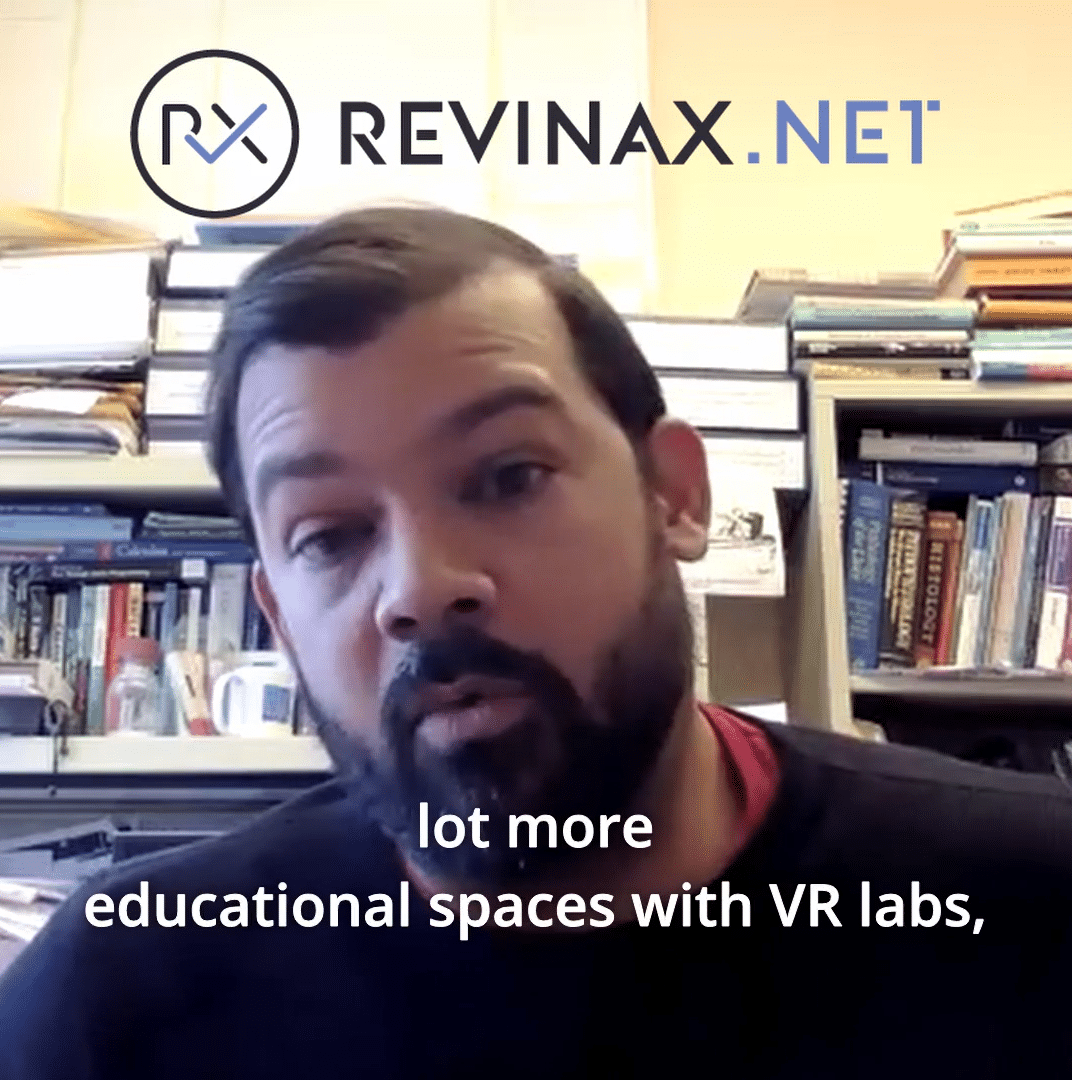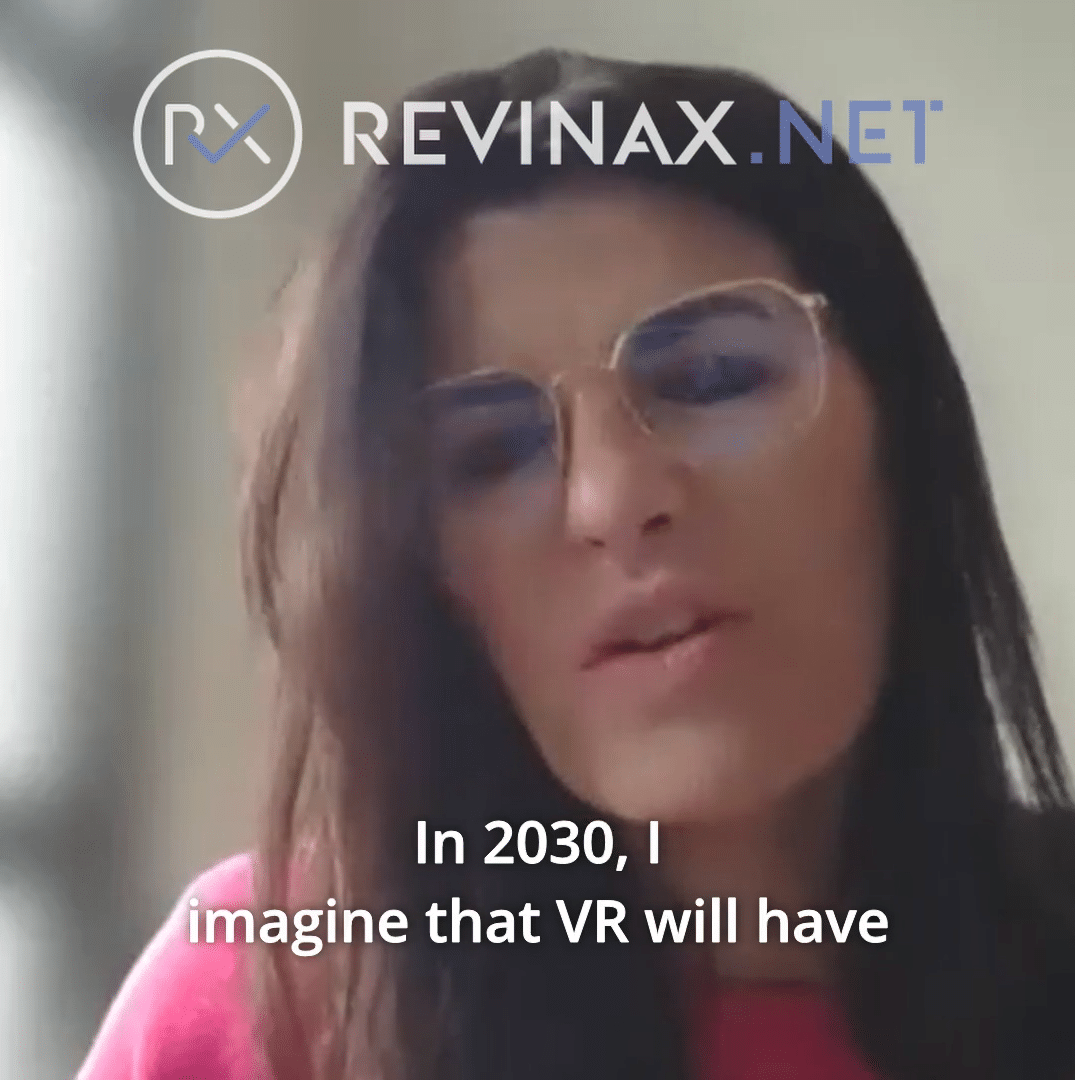Immersive learning has its own jargon and concepts. Because this emerging discipline is built on new technologies, it is worth clarifying some of the terms. Here is a small glossary to help you better understand immersive learning.
Immersive learning
It is not so easy to find THE definition of immersive learning. Nevertheless, all the versions we have been able to consult agree on a basic principle: the simulation of real or fictional situations in which learners are immersed.
These virtual environments are designed to enable users to acquire and apply practical skills with maximum effectiveness in the real world.
Among the most frequently cited benefits of immersive learning are
- No distractions: immersed in a controlled virtual environment, users remain fully focused until the end of the learning process,
- Sensory and emotional stimulation that encourages learner involvement,
- Increased engagement and motivation for learners,
- Personalised learning, allowing users to learn at their own pace and to repeat as many times as they wish until they are proficient,
- Total safety for learners, especially when simulating dangerous, stressful situations, etc.
- The result is increased and accelerated memorization.
Even if the disciplines share certain principles, immersive learning should not be confused with other forms of active pedagogy (making the learner the actor of his learning) such as experiential learning or learning-by-doing, which do not necessarily rely on the use of technological tools.
When it comes to immersive learning, “it’s not the technology that matters; what matters are the design principles that will allow learners to practice in context, apply their knowledge and improve their skills and abilities,” explains Koreen Olbrish Pagano, author of “Immersive Learning: Designing for Authentic Practice“. Among the main principles are certain factors that guarantee user immersion: the realism of the environments and the learner’s sense of presence in the simulated environment.
In any case, immersive learning devices are almost systematically based on the use of various immersive technologies such as virtual reality, augmented or mixed reality, 3D and/or 360° video, etc.
Virtual, augmented, mixed and extended reality: definition of immersive technologies
The term VR (Virtual Reality) was first introduced by Jaron Lanier in 1986, as “a technology that uses computers to create synthesized, multi-person realities that we can experience through our five senses and interact with, all through computerized artifacts “*.
Since then, different definitions have divided researchers, depending on whether they are based on the purpose of VR, its applications, its functions, its technical basis, or even the definition given to the word ‘virtual’…
The contours of virtual reality may appear even more blurred when considering the definition of other protagonists such as Gartner: “Virtual reality provides a computer-generated 3D environment (including computer-generated images such as 360-degree video) that immerses the user and responds to their actions in a natural way, typically via immersive head-mounted displays…“
Augmented reality (AR) can be defined as an interactive experience of a real situation in which certain elements are enriched by virtual information generated by a computer via various sensory modalities (visual, auditory, haptic, etc.). In short, AR is based on three main principles:
- The combination of real and virtual environments in real-time (without pre-calculated scenes)
- Real-time interaction with the user and the real world: a change in the real world leads to an adjustment of the digital layer,
- Accurate 3D recording of virtual and real objects
Between immersion in a recreated universe (Virtual Reality) and the augmentation of environments where the real remains predominant (Augmented Reality), many other immersive concepts have developed, which Paul Milgram proposed to unify in 1994 through a linear “continuum” going from the real to the virtual (cf. the illustration below)
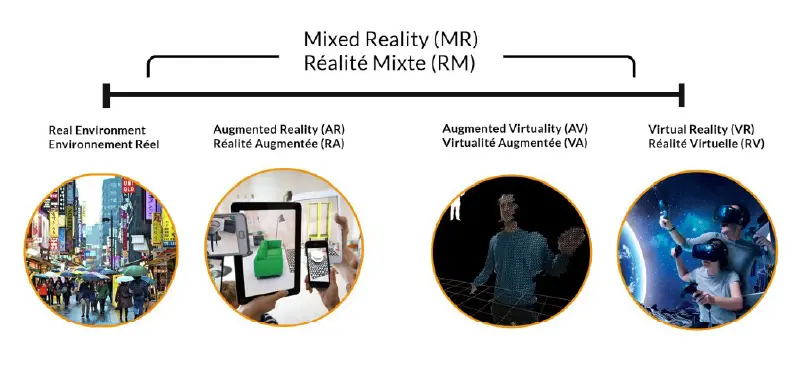
Source: https://www.augmented-reality.fr/cest-quoi-la-realite-augmentee/
It is therefore the concept of Mixed Reality that brings together technologies that use the real environment to superimpose a layer of virtual elements. Depending on the degree of virtualization, we speak of Augmented Reality or Augmented Virtuality (a predominantly virtual universe enhanced with real elements).
You may also hear about XR (for eXtended reality). This relatively recent concept can be seen as a desire to encompass all immersive technologies and replace all the letters attached to the term Reality (VR/AR/MR)… or to propose a more global approach, centered on usage. “If we can speak of all the technologies used as “immersive technologies”, eXtended Reality is the “usage” side and describes all the possibilities of this extended perception that we have of the world,” explains the website of the Association Francophone de Promotion de la Réalité Augmentée (https://www.augmented-reality.fr/).
Accenture*, which has communicated extensively on this concept, proposes the following definition:
“Via virtual and augmented reality, the extended reality is the first technology that allows people to be ‘relocated’ in time and space – and to abolish distance.
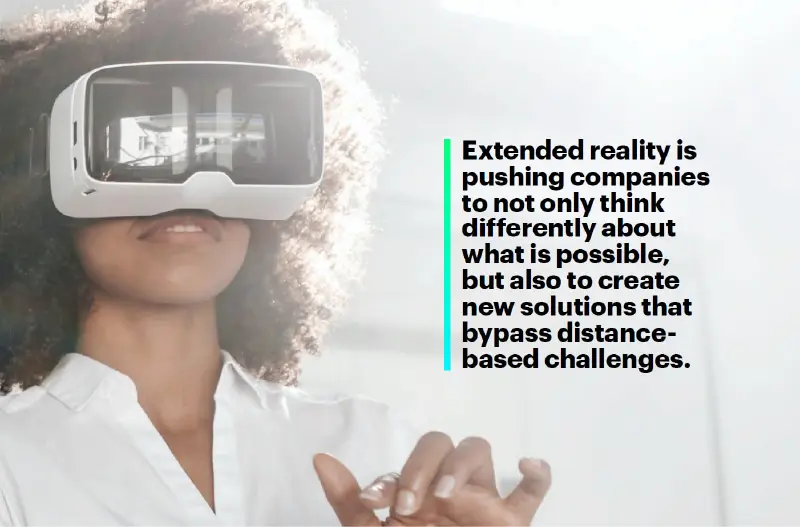
Video: 3D and/or 360° immersion
Can you do immersive learning with the video? Yes, as long as you maximize its immersive potential! In concrete terms, this means 360°, 3D, and/or first-person video. You can also combine video and virtual reality, as is the case with the tutorials designed by Revinax.
While the video does not yet offer the same level of interactivity as virtual reality (such as moving around in the environment), it does bring other specific advantages:
- The proposed experience is based on real life, guaranteeing a good sensory and emotional impact, and therefore more effective learning
- A feeling of immersion reinforced by the use of 3D with or without panoramic effect (360° video),
- The immersive experience is simpler, faster, and less expensive to design with video than with virtual reality (time and cost of designing/reconstructing a CGI environment).
The presence
For immersive learning, presence simply describes the impression that the user in an immersive environment “is there”. This conceptualization of presence borrows from multiple fields (communication, computer science, psychology, etc.) and is particularly dependent on sensory stimulation: the more senses an immersive learning device stimulates, the more it can generate a strong sense of presence.
As for the psychological effects of this presence, they are numerous and particularly interesting: enthusiasm, commitment, performance in learning and carrying out tasks, persuasion, memorization, etc.
Flow, or the “state of grace” of learning
Flow is a mental state that a person reaches when they are completely absorbed in an activity, at the peak of their concentration, fully engaged and satisfied in their achievement. In short, it is a true “state of grace” for learning: “It is a total immersion, using the emotions in the service of performance and learning. In flow, emotions are not only contained and channeled but in full coordination with the task at hand.
This is the state that immersive learning aims to induce (provided that the experience is sufficiently fluid, engaging, realistic, and… immersive) to increase the effectiveness of learning, whether it be the memorization of technical gestures or awareness of dangerous situations, etc.
Realism vs. Credibility
Is the realism of immersive learning devices a prerequisite for their success? Not necessarily! In some cases, it seems better to focus on another notion: credibility. The challenge is to design an environment and elements that are sufficiently suggestive for the user to easily transpose them into what they know or experience in reality.
“Depending on the training objectives and topics, credibility will take precedence over realism,” explains Ildi. “Thus, in the acquisition of soft skills, the credibility of the situation and the experience is decisive.
On the other hand, when it comes to training operators to handle materials or equipment, or to carry out complex gestures or processes, the realism of objects and situations becomes necessary for an optimal transposition of skills into real work situations. In this context, video – as a reliable and exhaustive capture of reality – is the most effective tool. Any other technique, because of its artificial nature, risks losing the user’s commitment.
1ère or 3e person: a question of perspective

Immersion in a virtual environment can take place from two types of viewpoints:
Third person: the user can see their avatar in the virtual environment. This viewpoint is usually used in situations involving collective/collaborative actions.
In the first person (subjective view): the user sees the situation as if he or she were experiencing it. This is a particularly involving and effective viewpoint when it comes to acquiring technical gestures or processes to be reproduced in real life. As mentioned in our article First Person and Learning, the use of the subjective view facilitates learning by imitation (with an ideal angle) by calling on our mirror neurons. Unburdened by the work of transposing/changing perspective, our brain assimilates the execution of a manual task more quickly and reliably.
DOF (Degrees Of Freedom)
DOFs are the degrees of freedom in virtual reality, i.e. the types of movements that can be detected and interpreted by the virtual reality system you are using. Today we can distinguish 2 categories of VR headsets:
- VR headsets with 3 DOFs (as well as carboards) only interpret the 3 axes of head movement (tilting the head right/left and front/back and turning the head left/right). These devices thus offer an experience that is primarily focused on perception and observation of a 360° environment, with relatively limited interaction with objects.
- The 6 DOF headsets detect 3 additional types of motion, namely movement in all 3 dimensions (front/back, right/left, up/down). These are the devices that potentially offer the most immersive experiences, but they also require a compatible environment and media.
FOV (Field of View)
One of the technical features to look at when purchasing a VR headset is the field of view (FOV). Expressed in degrees, the FOV indicates the width of the field of view that the user sees with the headset. Since the field of view of the human eye is about 200 degrees, most VR headsets have a FOV of about 100 degrees. However, some equipment achieves much higher values.
Haptics
This term refers to the simulation of touch by giving the user the sensation of pressure (or force feedback). This simulation is most often used via specially designed gloves, in virtual reality games or software that require interaction with objects.
What equipment for immersive learning?
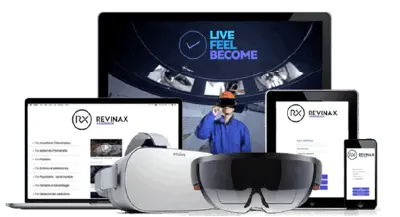
Beyond the design of immersive learning experiences, there is the question of their delivery, and in particular, the type of devices that your learners will use. Today, in this field, there is a wide choice, but it is heterogeneous in terms of cost and, above all, technical capacity. We can distinguish between different types of devices that can be used to broadcast your immersive training. It is up to you to determine which one is best suited to your situation… Why not seek the advice of specialists such as Revinax:
Wired VR headsets with motion sensors represent the top of the range. Connected to a computer, their power allows them to offer the most immersive experiences (often entirely in computer-generated images).
Stand-alone VR headsets, as the name suggests, offer an all-in-one solution for your immersive experiences. This is certainly the fastest-growing family of equipment. With a great diversity in terms of performance, and technical characteristics (FOV, DOF, screen definition, etc.)
Cardboards/smartphone headsets. These devices use the power and internal gyroscope of smartphones to deliver an immersive experience that is more limited in quality than VR headsets but at an unparalleled cost. They also allow training to be delivered in almost any situation.
Tablets & smartphones, via a dedicated application. Although less immersive than the systems presented above, these devices can nevertheless be used to disseminate the training capsules very widely.
Resources:
3D Virtual Reality Interactions – State of the art – October 2009 – Techniques et Sciences Informatiques – Nassima Ouramdane – Samir Otmane – Malik Mallem – IBISC CNRS FRE 3190 Laboratory
Accenture:
Technology Vision 2018 – Tech Trends Report


